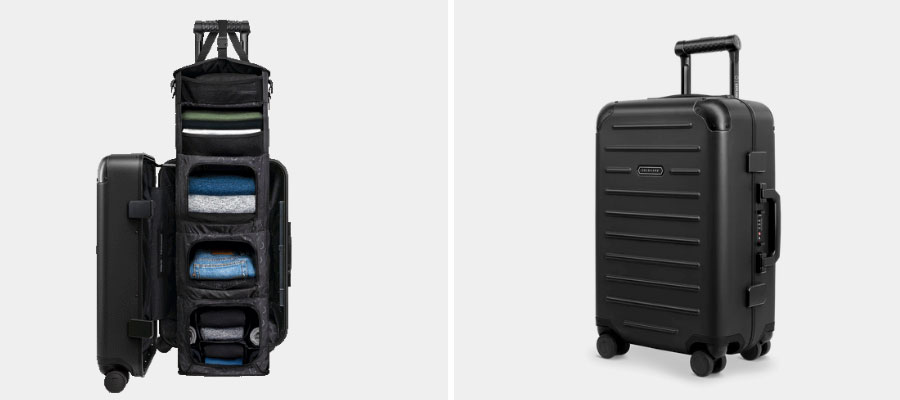I was in Hawaii last week at Qualcomm’s annual press and analyst conference, and the announcements made by the company were nothing short of amazing.
What was also interesting was that the week prior, Qualcomm announced a pivot toward RISC-V. The event didn’t address this strategic move, creating a certain amount of unintended drama. The RISC-V announcement primarily focused on wearables, which were nowhere to be seen at the event outside of earbuds.
This year’s Qualcomm event was all about AI, and it promised not only to revolutionize smartphones and PCs but also to create a level of interoperability that has been promised for years but never delivered, not even by Apple, which has a significant advantage over everyone else because it’s vertically integrated.
If Qualcomm delivers on its promises, the platform could enable one of its OEMs, such as Lenovo, to finally introduce solutions that cross both platforms, effectively outperforming what Apple currently offers.
Let’s talk about how Qualcomm kicked butt last week, and we’ll wrap with my Product of the Week, the Solgaard Carry-On Closet suitcase.
Snapdragon 8: The King of AI on Smartphones
Snapdragon 8 is now the new king of smartphone solutions with a CPU, GPU, and a new NPU (neural processing unit) for smartphones.
Qualcomm promises not only to improve efficiency and performance but also to embed AI capabilities previously thought impossible in PCs, let alone smartphones. When coupled with a comprehensive set of sensors, this solution will have us doing more with our smartphones than we ever thought possible.
Qualcomm demonstrated features that could massively change the utility of smartphones and make them an even bigger part of our lives than they are currently. Let’s walk through some of the coming improvements expected to debut in high-end smartphones before gradually becoming widely available over the years.
Exercise
Coupled with AR glasses, Qualcomm demonstrated how your phone could become an even bigger exercise coach than it is currently.
With custom training programs, AI-generated avatar trainers, and sensors that can assure your air quality and whether you are properly hydrated, smartphones with this capability could do a better job than Peloton does in more places and for far less money.
In addition, Peloton could use this technology to up its game by providing even more personalized instruction.
This new tech could be a game changer for those of us who want to be more fit.
Sound
Qualcomm demonstrated how its Bluetooth and audio technology could revolutionize how we listen to concerts, political events, comedy shows, and conferences.
With multiple channels available and a far greater potential sound range, these future smartphones, earbuds, or headphones could translate the content language of our choice by using either a separate sound stream or the AI in the phone to provide the verbal content in your language.
The feature could let you easily choose and switch between audio sources in a public setting like a bar or gym, allowing you to tune into a specific TV or sound source that interests you. This capability elevates the sound quality and makes it more targeted. It’s particularly beneficial in venues with many non-native speakers or listeners, making events more accessible to larger and diverse audiences.
Smell
It doesn’t provide smells, though a day in the open in Hawaii’s heat had me doing that naturally. I’m talking about the phone being able to smell things like freshness.
Imagine going to a store or restaurant and being able to tell whether the food was fresh enough with your phone as it senses the off-gassing or particulate matter that comes off decaying food.
Picking fresh food is a skill our ancestors had to varying degrees but was lost generationally. This feature could allow us to avoid food poisoning and ensure the dishes we eat or prepare are as fresh as possible.
Sight
Qualcomm has long focused on improving its cameras. It’s not unusual these days to see professional filmmakers use high-end smartphones to produce content. But those of us who aren’t pros increasingly depend on the AI in our smartphones to create better pictures.
Qualcomm demonstrated two different technologies. One using an advanced camera from Samsung highlighted how the camera would take a large image that could be, post-shot, zoomed in to capture the element you needed without any visible loss of resolution. This same technology using AI tracking could provide a near automatic way to follow the action, without panning the camera, at a sporting event for pictures or video.
The other approach is to use AI to derive parts of the picture that were cut off by the photographer. This feature worked on everything except faces, and the result was a bit over-the-top creepy. These technologies aren’t mutually exclusive, though you do need a special optical sensor for the first case. In both cases, you could improve a poorly shot photo long after leaving the location where you initially took it.
Generative AI
Qualcomm demonstrated how generative AI could make Siri look like an idiot by allowing conversations between the user and their phone to create better results, entertain, or form a deeper relationship with the AI in the phone.
Qualcomm made a big point about how running these large language models (LLMs) on the phone is a game changer, dramatically reducing the costs associated with the technology and latency and providing a lower price and better performance in one move.
I still think Qualcomm needs to focus more on the issue of people talking into their phones. However, the company has partnered with BMW, which has done some interesting work in active noise cancellation. This partnership may offer a way to reduce or eliminate the distracting sounds created by phone conversations.
Qualcomm clearly highlighted that the belief that phones couldn’t run large generative AI models was wrong.
PC/Smartphone Integration
Qualcomm highlighted a level of PC/smartphone symbiosis much more advanced than anything I’ve seen. The technology allows seamless cursor and file transitions between smartphones, tablets, and PCs, making switching between platforms and migrating files easier.
It uses the screens of all three devices to expand screen real estate and allow a wireless connection between them to behave more like what you’d see from connected monitors to the same PC. This move should put Apple on notice that it needs to up its game, or it’ll fall well behind this latest Qualcomm effort.
Snapdragon X Elite
Qualcomm also introduced the Snapdragon X Elite processor, boasting a substantial boost in PC performance alongside a dramatic reduction in energy use. This innovation could enable laptops to deliver multiple days of battery life, outperforming any competitor in the same class.
Don’t expect related PCs to show up until next year. They’ll still have to deal with emulation, but less and less, given Microsoft has fully embraced the platform. Even against Apple’s M2 chip, Qualcomm’s Snapdragon X Elite promised a vast increase in performance using similar energy consumption.
We’ll talk more about this when laptops using the part eventually show up. However, 2024 promises to be a fiercely competitive battleground because AMD and Intel are creating products that embrace AI, performance, and substantial energy savings this coming year.
Related: It’s About To Become Much Harder To Choose the Right PC | Nov. 7, 2023
I’m using my favorite laptop on this trip, the last generation HP Folio, which used Qualcomm’s older part. The new Snapdragon X Elite promises to be such a significant improvement over what I’m using that I’ll be extremely excited to swap out this laptop for a better one using the new part.
Wrapping Up: Qualcomm’s Grand Slam
At its annual press/analyst event in Hawaii, Qualcomm came to play. Announcements surrounding both Snapdragon 8 and Snapdragon X Elite were nothing short of amazing.
However, what I found particularly interesting was it didn’t talk at all about its move to RISC-V for wearables, though I had a sense there is far more coming as Qualcomm appears to drift away from Arm to an equivalent technology that is cheaper and comes with fewer restrictions and relative risk.
While this year’s Qualcomm event knocked my socks off, next year’s event is already highlighting a level of potential disruption that is almost unbelievable.

Solgaard Carry-On Closet Suitcase
Solgaard makes one of the most interesting rollable suitcases on the market. What makes it unique are two things: it uses recycled plastics and has what amounts to a dresser inside it. So, it is both green and truly handy.
Typically, on a longer trip, I have individual containers for each clothing type which I then must unpack before using and then try to get back into my bag when I return, and it is kind of a pain in the butt.
With the Solgaard, you put your stuff in a hang-up, dresser-like construct, hang that in the closet when you arrive, and then work out of that unit rather than having to unpack. This approach tends to keep your clothing in better shape and is a ton more convenient when on the road. The suitcase is also quite sturdy, with reinforced corners and a scratch-resistant finish.

Carry-On Closet Suitcase With Shelves (Image Credit: Solgaard)
However, on this trip, the baggage handlers at Alaska Airlines decided to abuse the bag badly, and it broke. Since it was our first time using the bag, the extent of the damage was surprising; even the metal parts looked like they’d been through a shredder. Alaska Airlines was apologetic, promised to make it right, and gave us an emergency bag to use until we could get a replacement.
When I contacted Solgaard and sent them a picture of the damage, Solgaard just asked for an invoice number and then immediately sent us a new replacement bag, apologizing for the problem.
It is rare to get this level of customer support for something that resulted from a problem the manufacturer didn’t create. I’m impressed, and as a result, Solgaard suitcases are my Product of the Week.























































